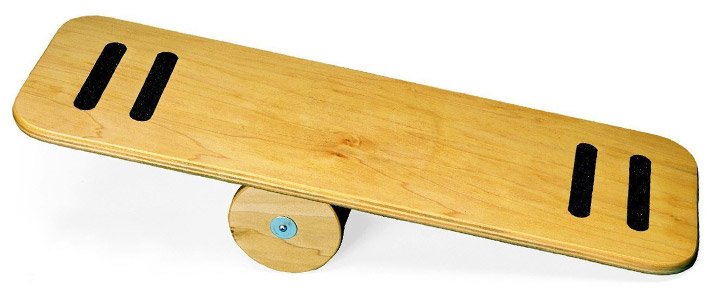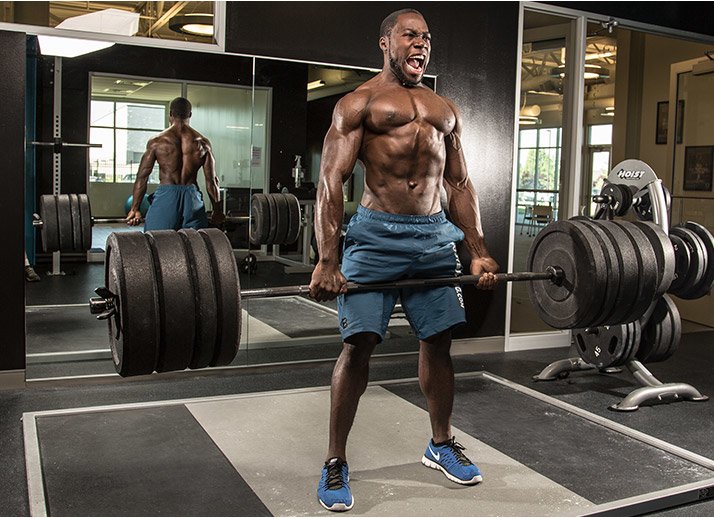
8 Things You Should Never Do At The Gym
Do you sit between sets of a tough leg exercise, or waste time on your phone during your workouts? Stop the madness! Check out this guide to 8 things you shouldn't do at the gym.
When it comes to hitting the gym, what you should do can be summed up relatively easily: Nail your exercise form, train smart, and apply maximum focus to every workout. But the list of what you shouldn't do is considerably longer. Coaching cues like "Don't round your back" or "Don't lock out your arms" are common advice from good trainers, but there's plenty of wisdom that isn't tied to specific movements. With that in mind, here are eight additional things you should never do at the gym if you want to supercharge your results!
1Never rest on your can during a leg workout
You've just finished a grueling set of leg curls, and your only thought now is to sit down and rest between sets. OK, you can get away with a second or two, but parking on your butt for long rest breaks on leg day is actually counterproductive to recovery. Walking around helps flush the muscle of the byproducts (e.g., hydrogen ions) of high-intensity training that cause muscle fatigue.
If you sit your ass down on a bench or don't bother to get up out of the machine, you're actually reducing the blood flow to your muscle. Blood helps flush metabolic byproducts, so limiting blood flow makes it take longer to get ready for your next set. In other words, if you sit around between all your leg exercises, you'll simply be "less recovered."
Catch your breath, but try to keep moving on leg day for better recovery!

Never blindly copy an exercise someone else is doing
You know how somebody catches a virus, and pretty soon everybody's sick? That can happen with exercise technique gone bad, too. One guy does something wrong, and sooner or later, you see everyone doing it with the same bad form. I've found this to be especially true with rotator-cuff warm-ups and the Romanian deadlift, which many lifters turn into a sloppy pseudo-deadlift.
Just because the biggest guy at your gym does an exercise doesn't mean he's doing it correctly. Observation is a good place to start when learning new exercises, but it's just that—a start. To really nail the finer points of tough exercises, check out the Bodybuilding.com Exercise Database, where you'll find written and video instructions for hundreds of moves. Working with a knowledgeable coach or training partner can also help.
3Never use a balance board during a muscle-building workout
Balance boards were popular among trainers about a decade ago. Balancing yourself and doing an exercise movement simultaneously is harder than lifting with your feet planted, but if your goal is to build strength or muscle, the trade-off isn't a good one. You simply have to sacrifice too much weight when training on an unstable surface, and you won't get the same returns if your primary goal is to build muscle size. If you want to train for stability and size, you're better off training for each separately.

Never look for ways to hide the fact you don't train legs
Once you've been going to the gym for a while, you'll start to notice certain trends among people. Everyone trains chest on Mondays, for example, and some guys only train legs late at night when no one is there to see how little weight they can squat. If you don't have great legs, stop looking for ways to cover up your weakness, like wearing long pants or shortchanging your range of motion on big exercises.
Instead, embrace your weakness and attack it instead of hiding it. Redouble your efforts to build massive wheels instead of manufacturing excuses about your bad knees. Building your best body isn't all about chest and arm day. If you can't pull it together for 1-2 tough hours per week for legs—a challenge, sure, but not insurmountable—you probably don't belong to the "no pain, no gain" crew.
5Never waste time on your phone between sets
This is a pet peeve of many longtime lifters and trainers, and it drives me crazy. You see, in the prehistoric days, we didn't have phones to take to the gym to entertain us between sets. Unfortunately, the advent of cell phones has generated a lot of wasted time in the gym, plus a wave of lifters who, after finishing a set, simply fiddle with their phones for no other reason than to say, "Don't even think about asking to work in."
Unless you're actively tracking your workout, leave your phone alone while you train. It's too easy to get distracted by social media between sets, blow your rest periods, or lose focus on the work at hand. Phones also make it easier to ignore the gym-goers around you who may need to work in, ask for a spot, or look for friendly advice.

Never confuse training hard with making progress
Why do some people train hard but never seem to make progress? Most likely because effort alone doesn't guarantee results. For example, you can do biceps curls with a 25-pound bar for 60 reps, or you can use a 75-pound bar and do it only 8-10 times. Both efforts are "hard," and the light weight might even give you a better short-term muscle pump, but the heavy weight is better for building muscle and far easier to increase progressively and programmatically.
So long as you're using good form and training close to muscle failure, you want to choose a weight you can do for 8-12 reps when training for muscle growth. When that weight becomes easy, you can increase the load or make the movement more challenging in other ways—increase your time under tension, for example, or shorten your rest periods. For a more in-depth discussion on muscle-building rep ranges, check out "How Much Weight Should You Lift?"
7Never, ever get comfortable
We do lots of things to make our lives more comfortable, but "getting comfortable" isn't how you want to approach resistance training. Exercise is a science, and one of the fundamental principles is based on a concept called "progressive overload." When you add weight to your bench press, the muscle fibers respond—in the presence of good nutrition and rest—by growing bigger and stronger. When you stop adding weight or pushing for more reps and grow comfortable with a routine, the body no longer has a reason to adapt further. So never put your workout on cruise control.

Never add weight before nailing your form
Lifters are always in a rush to add weight to the bar because they feel it's a sign they're getting bigger and stronger. Beginning lifters, however, often sacrifice form to make those quick weight progressions. That's never smart, but it's especially dangerous when it comes to whole-body, technical lifts like squats and deadlifts.
Learning how to do a biceps curl is pretty easy, but learning how to deadlift correctly is not. Watch credible exercise videos, get the input of an experienced lifter, read a solid deadlifting guide, and practice, practice, practice. Resist the urge to start putting more plates on the bar until you've nailed the form—it will make a huge difference in your lifting career.
